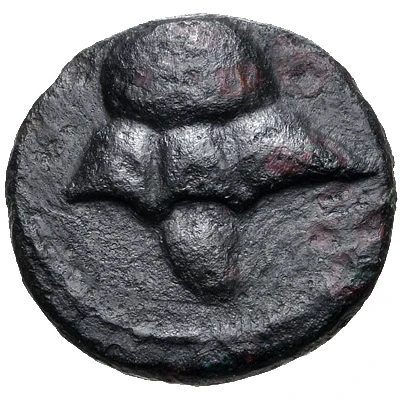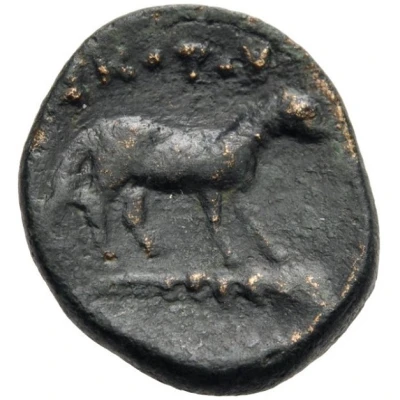


© Classical Numismatic Group, Inc.
Chalkon 300 BC - 200 BC
| Bronze | 2.56 g | 14.0 mm |
| Issuer | Skotoussa (Thessaly) |
|---|---|
| Type | Standard circulation coin |
| Years | 300 BC - 200 BC |
| Value | Chalkon (1⁄48) |
| Currency | Drachm |
| Composition | Bronze |
| Weight | 2.56 g |
| Diameter | 14.0 mm |
| Shape | Round (irregular) |
| Technique | Hammered |
| Demonetized | Yes |
| Updated | 2024-10-10 |
| Numista | N#143482 |
|---|---|
| Rarity index | 100% |
Reverse
A sheep standing and facing right on a club that faces also right. Inscription divided on the top and bottom of the sheep.
Script: Greek
Lettering:
ΣΚΟΤΟV
ΣΣΑΙΩΝ
Interesting fact
The Chalkon coin was used as a form of currency in ancient Thessaly, specifically in the city of Skotoussa, during the 3rd century BC. Despite its small weight of 2.56 grams, it was widely accepted as a medium of exchange and played an important role in the local economy. Its design featured the image of a horse, which was a symbol of strength and prosperity in ancient Greek culture.



